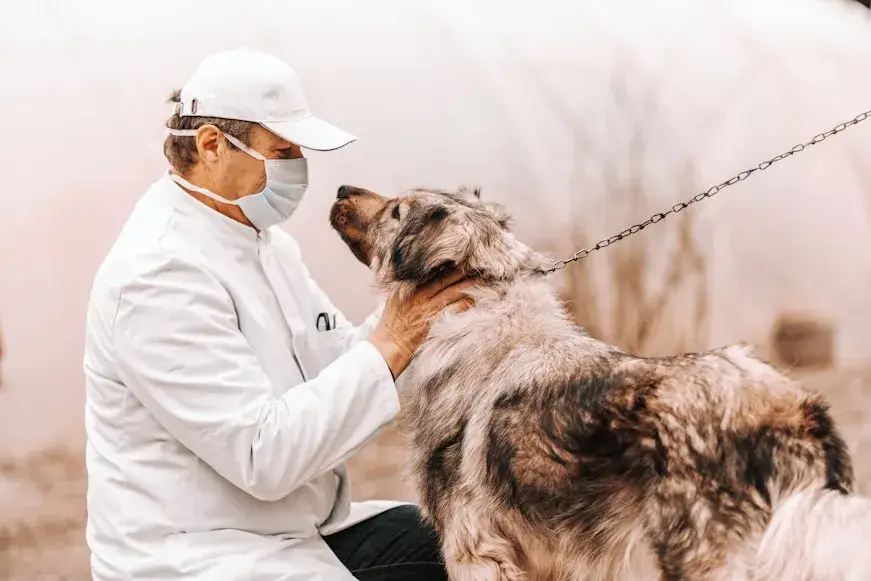Blog
Dog Skin Conditions: A Comprehensive Guide to Symptoms, Causes, Treatments, and Prevention in 2025

Hey there, fellow dog parents! As a dog owner, there is nothing that hits home more for me than watching my furry best friend bark and whine endlessly because their skin issue makes them itch relentlessly or the red patches. Dog skin conditions are incredibly common. They’re actually one of the leading reasons pups end up at the vet. But the good news? Many are easily addressable with some know-how. We will be breaking it all down in this guide: from the early signs, to the root causes and treatments (what to expect: the most current 2025 research on everything from your skin microbiome), and of course of prevention tips that actually make a difference. If your dog has ANY of these, I’ve got you covered. So, let’s take a deep dive into that, and help your pup return to their zoomies and belly rubs!
Understanding Dog Skin Conditions: Why They Happen and What They Look Like
Your dog’s skin is their first line of defense against the worldit’s the largest organ they’ve got! But when things go wrong, it can lead to discomfort, infections, and even bigger health issues if ignored. Canine skin disorders range from mild irritations to chronic problems, affecting everything from their coat to their overall mood. Based on recent studies from Frontiers in Microbiology (2025), an imbalance in the skin’s bacterial community—think overgrowth of Staphylococcus bacteria, plays a huge role in many conditions, especially in inflamed areas.
Unlike us humans, dogs can’t tell us what’s bothering them, so catching symptoms early is key. And hey, if you’ve noticed your pup’s skin acting up, you’re not alone,millions of dog owners deal with this every year. Stick with me, and by the end, you’ll feel like a pro at handling canine dermatitis, itchy dog skin, or whatever’s plaguing your pooch.
Common Symptoms of Dog Skin Conditions
Spotting dog skin issues early can make all the difference. Here’s what to watch for, think of it as your pup’s way of waving a red flag:
- Itching and Scratching: Constant pawing at ears, belly, or paws? This is the #1 sign something’s off.
- Redness or Inflammation: Pink or angry-red skin, especially on the belly, groin, or underarms.
- Hair Loss (Alopecia): Patchy bald spots that might look “moth-eaten.”
- Flakes, Scales, or Dandruff: Dry, flaky skin that leaves white specks on their bed.
- Bumps, Pustules, or Sores: Raised lumps, pimples, or oozing wounds.
- Odor: A musty or yeasty smell that’s hard to ignore.
- Discoloration or Thickening: Darkened skin (hyperpigmentation) or leathery texture from chronic irritation.
- Hot Spots: Sudden moist, red areas that appear overnight and feel warm to the touch.
If these sound familiar, jot down when they started and any patterns (like worsening after walks). Pro tip: Snap photos to show your vet, It helps track progress!
Causes of Dog Skin Conditions
Skin problems in dogs don’t just pop up out of nowhere. Here’s the lowdown on the main culprits, backed by insights from the Merck Veterinary Manual and recent 2025 research:
- Allergies: The biggie! Environmental allergens (pollen, dust mites) or food sensitivities trigger about 40% of cases. A 2025 study in Veterinary Dermatology highlights how climate change is worsening pollen seasons, leading to more atopic dermatitis.
- Parasites: Fleas, ticks, mites (like those causing mange), and even lice love to feast on dog skin, causing intense itchiness.
- Infections: Bacterial (staph overgrowth) or fungal (yeast like Malassezia) infections often tag-team with other issues.
- Hormonal Imbalances: Thyroid problems or Cushing’s disease weaken the skin barrier, per Cornell University’s latest autoimmune research.
- Genetics: Breeds like Bulldogs or Labs are prone due to skin folds or dense coats. A 2025 Frontiers study on microbiomes shows genetic factors disrupt bacterial balance.
- Environmental Factors: Dry air, harsh shampoos, or poor nutrition (lacking omega-3s) can dry out skin.
- Autoimmune Issues: Rare but serious, where the body attacks its own skin cells, as detailed in Cornell’s 2025 updates on pemphigus.
- Other Triggers: Stress, poor grooming, or even certain meds can spark flare-ups.
Understanding the root cause is crucial, treating symptoms alone won’t cut it long-term.
The Most Common Dog Skin Conditions
There are dozens of canine skin issues, but these are the heavy hitters. I’ve expanded beyond the usual 10-15 lists (like in PetMD or Spruce Pets) to include emerging ones from 2025 research, with real-world descriptions to help you visualize. Remember, pics aren’t everything, always consult a vet for diagnosis.
1. Allergies (Atopic Dermatitis)
Itchy, red skin from environmental or food triggers. Symptoms: Scratching at ears, paws, and belly. Treatment: Antihistamines or allergy shots. Link to our article on best dog food for allergies.
2. Flea Allergy Dermatitis
Even one flea bite can cause chaos. Look for black “flea dirt” and hot spots on the back. Prevention: Year-round flea control like NexGard.
3. Bacterial Infections (Pyoderma)
Red bumps and pustules from staph bacteria. Often secondary to allergies. Antibiotics and medicated shampoos work wonders.
4. Hot Spots (Acute Moist Dermatitis)
Sudden raw, weepy patches from self-trauma. Clean and use e-collars to prevent licking.
5. Yeast Infections (Malassezia Dermatitis)
Greasy, smelly skin with brown nail discoloration. Common in folds; treat with antifungal meds.
6. Ringworm (Dermatophytosis)
Fungal infection causing circular hair loss. Zoonotic (spreads to humans), so handle carefully. Oral antifungals needed.
7. Mange (Demodectic or Sarcoptic)
Mites burrow in, causing hair loss and scabs. Demodex is genetic; sarcoptic is contagious. Ivermectin-based treatments.
8. Dry Skin (Seborrhea)
Flaky, oily skin from genetics or diet. Omega supplements help; check our guide to dog grooming essentials.
9. Alopecia (Hair Loss)
Could be hormonal or stress-related. Blood tests diagnose underlying issues.
10. Skin Cancer
Lumps or non-healing sores. Biopsy essential; surgery often cures early cases.
11. Autoimmune Diseases (e.g., Pemphigus)
Crusty lesions on nose and face. Immunosuppressants like prednisone, per Cornell’s 2025 research.
12. Folliculitis
Inflamed hair follicles looking like pimples. Often bacterial; shampoos clear it up.
13. Ear Infections
Red, smelly ears tied to skin allergies. Clean and medicate regularly.
14. Ticks and Lice
Visible bugs causing irritation. Remove promptly; use preventives.
15. Acral Lick Dermatitis (Lick Granulomas)
Compulsive licking creates sores. Behavior mods and cones help.
16. Food Allergies
Similar to atopy but with GI issues. Hypoallergenic diets trial for 8-12 weeks.
17. Immune-Mediated Diseases (e.g., Lupus)
Sun-sensitive rashes. Steroids and sun avoidance.
18. Seborrheic Dermatitis
Oily scales; breed-specific. Medicated baths.
19. Skin Tumors (e.g., Histiocytomas)
Benign bumps in young dogs; monitor for changes.
20. Psoriasis-Like Conditions
Rare, but scaly patches mimic it—often allergies or autoimmune.
Bonus from 2025 research: Microbiome imbalances lead to chronic issues; probiotics might help, but more studies needed (Frontiers, 2025).
How Vets Diagnose Dog Skin Conditions
Diagnosis isn’t guesswork. Vets use skin scrapes, biopsies, cultures, or blood tests. Allergy testing pinpoints triggers. If it’s complex, a dermatologist might step in, as per MSD Vet Manual. Don’t skip this; self-diagnosing can worsen things.
Effective Treatments for Dog Skin Conditions
Treatment depends on the cause, but here’s the scoop from MSD and recent studies:
- Topical Therapies: Medicated shampoos (e.g., chlorhexidine) for infections. Dilute and rinse well!
- Oral Meds: Antibiotics for bacteria, antifungals for yeast, steroids for inflammation.
- Systemic Options: For autoimmune, immunosuppressants like cyclosporine.
- Parasite Control: Products like Bravecto.
- Latest 2025 Advances: Microbiome-targeted therapies, like probiotics, show promise in reducing staph overgrowth (Frontiers study).
Follow MSD guidelines: Combine topicals with systemics for best results. External link to AVMA’s skin health tips.
Home Remedies and Natural Solutions for Dog Skin Conditions
From X discussions, folks swear by neem leaves, coconut oil, or apple cider vinegar sprays for mild cases—but always vet-check first! Garlic (in moderation) for fleas, or oatmeal baths for itch relief. Caution: Overuse can irritate. For example, a 2025 X post shared success with DMSO mixtures, but it’s not for everyone.
Prevention: Keeping Your Dog’s Skin Healthy Year-Round
Prevention beats cure!
- Flea/tick meds monthly.
- Balanced diet with omegas—check our post on supplements for shiny coats.
- Regular grooming and baths.
- Allergy management: Wipe paws after walks.
- Humidity control indoors.
- Annual vet check-ups.
A 2025 WebMD update notes early probiotic exposure might prevent allergies.
When to Rush to the Vet for Dog Skin Conditions
If symptoms persist over a week, worsen, or include lethargy/fever, go now! Early intervention prevents complications like secondary infections.
There you have it—a no-fluff guide to dog skin conditions that covers more ground than most. Your pup deserves the best, so arm yourself with this info and watch them thrive. Got a story about your dog’s skin saga? Share in the comments. I’d love to hear! And if this helped, pass it on to a fellow dog lover. Stay pawsitive!
Ready to Help Your Dog Feel Better?
If your pup’s dealing with blood in their stool, don’t wait get the full scoop on causes, treatments, and prevention in our detailed guide at Dog Pooping Blood. Share your story in the comments and let’s keep our furry friends healthy together!












